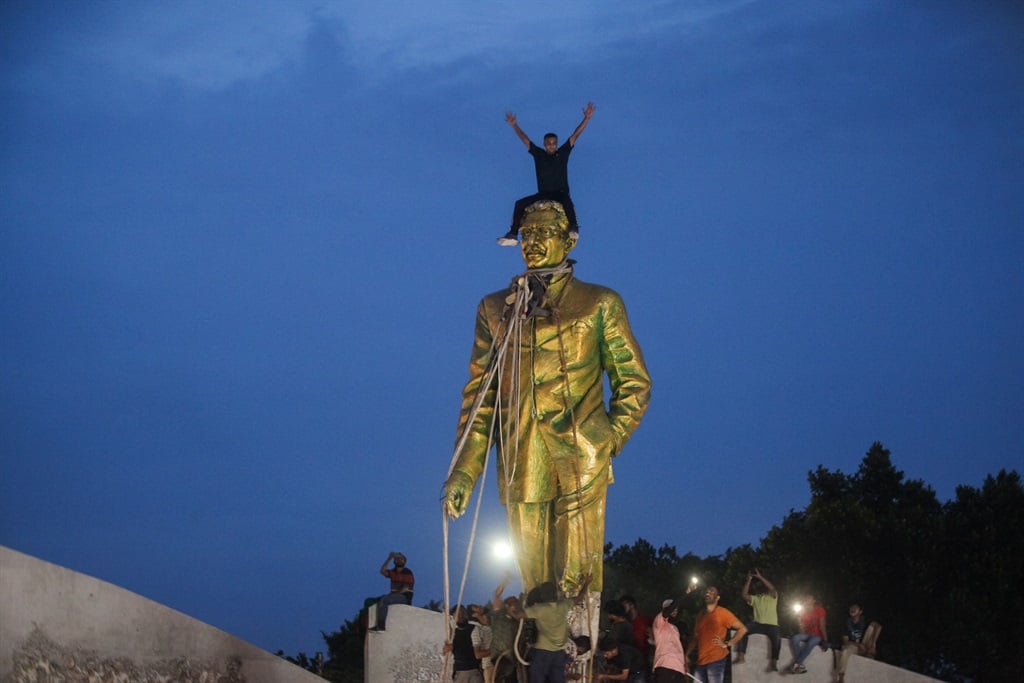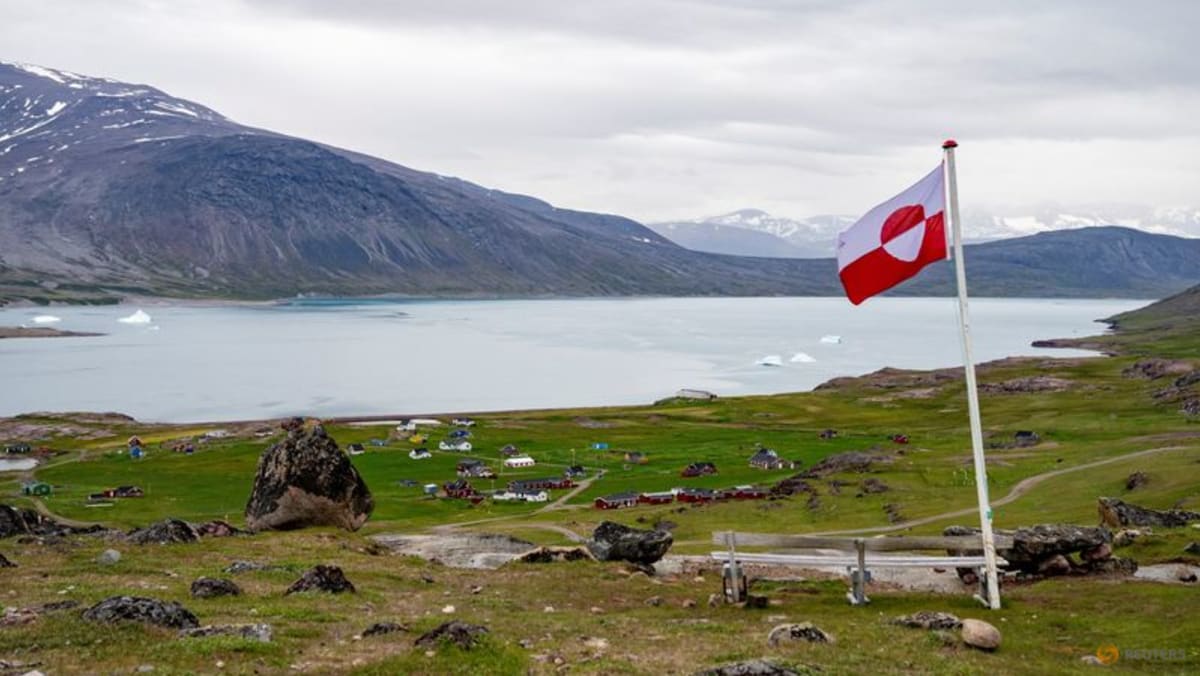Protesters on top of a statue of Sheikh Mujibur Rahman, Bangladesh’s founding father and parent of ousted Prime Minister Sheikh Hasina, in Dhaka on 5 August 2024. (Abu SUFIAN JEWEL / AFP)
- There was chaos and celebration in Bangladesh after Sheikh Hasina resigned and fled.
- Police and protesters were killed, a museum set on fire, and statues defaced.
- Many considered the fall of the government to represent a new independence day.
Bangladeshi mobs torching TV stations, protesters lounging in beds in the premier’s home and bloody corpses: eyewitness described chaotic scenes after the country’s prime minister was ousted Monday and the military took power.
For some, the end of Sheikh Hasina’s 15-year-rule was something to celebrate, as they waved flags from the rooftop of her home after she fled the country by helicopter.
“I can’t express my feelings in words, I’m so happy,” Mohammad Bashir, 35, one of the millions of Bangladeshis who flooded the streets after the army chief declared he was forming a caretaker government.
“Now my only wish is to take care of all the families of the killed people and students, and to deliver justice.”
Messages flooded social media with people greeting each other on Facebook by saying; “Happy Independence Day.”
But in the corridors of the Dhaka Medical College Hospital, an AFP reporter saw bodies lying in pools of blood, among at least 56 people killed Monday in the dramatic culmination of more than a month of deadly protests that have left 356 dead.
Among the 44 bodies in the hospital, many of them young men, almost all had bullet wounds.
Police said some of their officers were also killed.
Crowds took their revenge on the fallen leader.
Some smashed statues of Hasina’s father, Sheikh Mujibur Rahman, the country’s independence hero after the war that split the South Asian nation from Pakistan in 1971.
Others set a museum to him on fire, flames licking at portraits in destruction barely unthinkable just hours before, when Hasina had the loyalty of the security forces under her autocratic grip.
Offices of Hasina’s Awami League across the country were torched and looted, eyewitnesses told AFP.
Hundreds of people stormed the parliament building, with broadcasters showing protesters cheering wildly, jumping on tables, and setting off what appeared to be smoke bombs.
Sazid Ahnaf, 21, was among those on the streets of Dhaka, calling the toppling of Hasina a “proud moment”.
“I feel so happy that our country has been liberated,” he said, comparing the events to the independence war against Pakistan.
“We have been freed from a dictatorship. It’s a Bengal uprising, what we saw in 1971, and now seeing in 2024.”
What began as a student movement against civil service job quotes spiralled into mass protests demanding that Hasina quit.
A key symbolic target of protesters was the premier’s official residence, a sprawling palace in the heart of the capital.
Some were shown on broadcasters laughing as they explored Hasina’s home after five terms as prime minister — lying in the beds and carrying off furniture and books and televisions.
Others raided the kitchen, gleefully devouring food that was left behind.
Even ornamental fish in the extensive gardens were netted and pulled out, with people waving those they had caught for the camera.
Others posed with animals they found in the former premier’s home, including goats and rabbits.
Murals and statues of Hasina’s father were again defaced or smashed with hammers.
Mobs also broke into the home of the chief justice, stealing cars and furniture, Dhaka’s Daily Star reported.
The army said it was in charge, but many police officers — who had often led the crackdowns on deadly protests since July — feared reprisal attacks.
“Many police stations have been attacked, some police officers were killed,” a senior police officer said, speaking on the condition of anonymity. “It is mob rule.”




















Discussion about this post